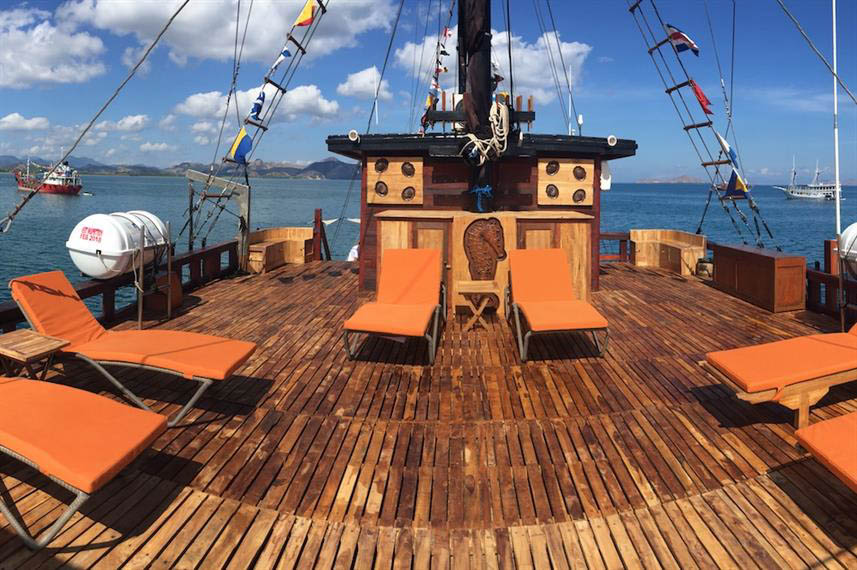New Zealand is known for its wilderness areas on land but it is also home to 36 marine reserves and a spectacular array of dive sites. With accessible coastlines and hundreds of offshore islands, there are opportunities to dive wrecks, subtropical reefs, explore arches and dive within kelp forests, to name but a few. It is also possible to dive with rays and sharks, given that 26 species of ray and 113 species of shark have been recorded in New Zealand waters. There is something suitable for all dive preferences and abilities and here are our top picks of diving the North Island.
The Rainbow Warrior
Where is it: Matauri Bay, the Bay of Islands
What makes it special: The Rainbow Warrior was once a protest vessel for Greenpeace and was sunk by French government spies in 1985 whilst she was docked at the Auckland waterfront, which resulted in the death of one of the crew. She was refloated and sunk off Matauri Bay as an artificial reef and is a popular wreck dive that offers colourful jewel anemones, john dory, kingfish, moray eels and crayfish.
Details: The wreck lies at 27m and is approximately 40m in length. The currents are mild and visibility is good February – June. This dive is suitable for Advanced Open Water divers or equivalent and water temperature ranges from 15C in winter up to 22C in late summer. A 7mm wetsuit is ideal for winter diving and a 5mm suit is ideal for summer dives. As with any wreck dive, we recommend carrying a torch and dive knife. Try Pahia Dive and Dive North.
When to go: February – June for good visibility and warmer water temperatures.
The Poor Knight Islands
Where is it: Tutukaka
What makes it special: Jacques Cousteau once said that the Poor Knight Islands Marine Reserve was one of the world’s top five dive sites. These islands lie 23 Km off the Tutukaka coast and offer spectacular dives with abundant and colourful marine life. These islands offer plentiful nudibranchs, large shoals of pelagic fish, archways, caves, kelp forests and annual visitors including stingrays and sharks. The islands also offer fantastic snorkelling opportunities for non-divers, making a day trip to the Poor Knights suitable for the whole family.
Details: There are multiple dive sites at different depths, suitable for novice and experienced divers. Water temperatures ranges are similar to the Bay of Islands (see above) and a 7mm wetsuit is ideal in winter and a 5mm suit in summer. Try Dive! Tutukaka.
When to go: Summer offers warmer water but the possibility of reduced visibility when compared to winter diving. It is possible to dive with large numbers of stingrays in late summer as they gather to mate in the area. Diving is available year round.
Mercury & Aldermen Islands
Where is it: Coromandel Peninsula
What makes it special: The Aldermen Islands lie to the southeast of Mercury Bay and are remnants of a volcanic complex. These rocky islands offer tunnels, pinnacles and a variety of pelagic species including huge schools of mackerel. The dives are colourful and similar in nature to the Poor Knights, making them one of New Zealand’s top dives. The nearby Mercury Islands offer moray eels, crayfish, abundant nudibranchs and stunning above water scenery of white sandy bays and rugged coastline.
Details: There are many dive sites at different depths to explore and these islands are suitable for novice and experienced divers. Water temperature ranges from approximately 14C in winter to 21C in late summer and a 7mm or 5mm suit is recommended depending on the season and cold tolerance. Try Dive Zone Whitianga
When to go: Diving is available year round, though summer offers the best water temperature and climate for exploring the popular coastline during non-diving days.
Goat Island
Where is it: Leigh
What makes it special: Goat Island is New Zealand’s first marine reserve and is easily accessible from Auckland city. The reserve offers goat fish, snappers and abundant school fish and the opportunity to see octopuses, eagle rays and stingrays. There are cliff side and kelp forest dives to enjoy, swim-throughs and reefs.
Details: Dive depths are variable and the availability of some sites is affected by tides and currents. The marine reserve offers diving for all abilities and also snorkelling. The water temperature is similar to that of the Coromandel Peninsula (see above). A 7mm or 5mm suit is recommended depending on season. Try Goat Island Dive.
When to go: Year round
Wellington Region
Where is it: Wellington & Kapiti Coast
What makes it special: The coastline surrounding the capital of New Zealand offers an interesting variety of dive sites including shore dives, multiple ship wrecks and the Taputeranga Marine Reserve. Whitireia Park and Titahi Bay offer dives for novices and stingrays and seahorses can be found at 3m depth. Wellington Harbour is known for seahorses, pipefish, starfish and schools of wrasse and the opportunity to try night diving.
Details: There are dives suitable for all abilities on the doorstep of this vibrant city but the weather can be variable, so local knowledge is an absolute must. The water temperature ranges from 10C in winter to 17C in summer and a 7mm suit is recommended. Try Island Bay Divers and Dive HQ Wellington.
When to go: January – June.





